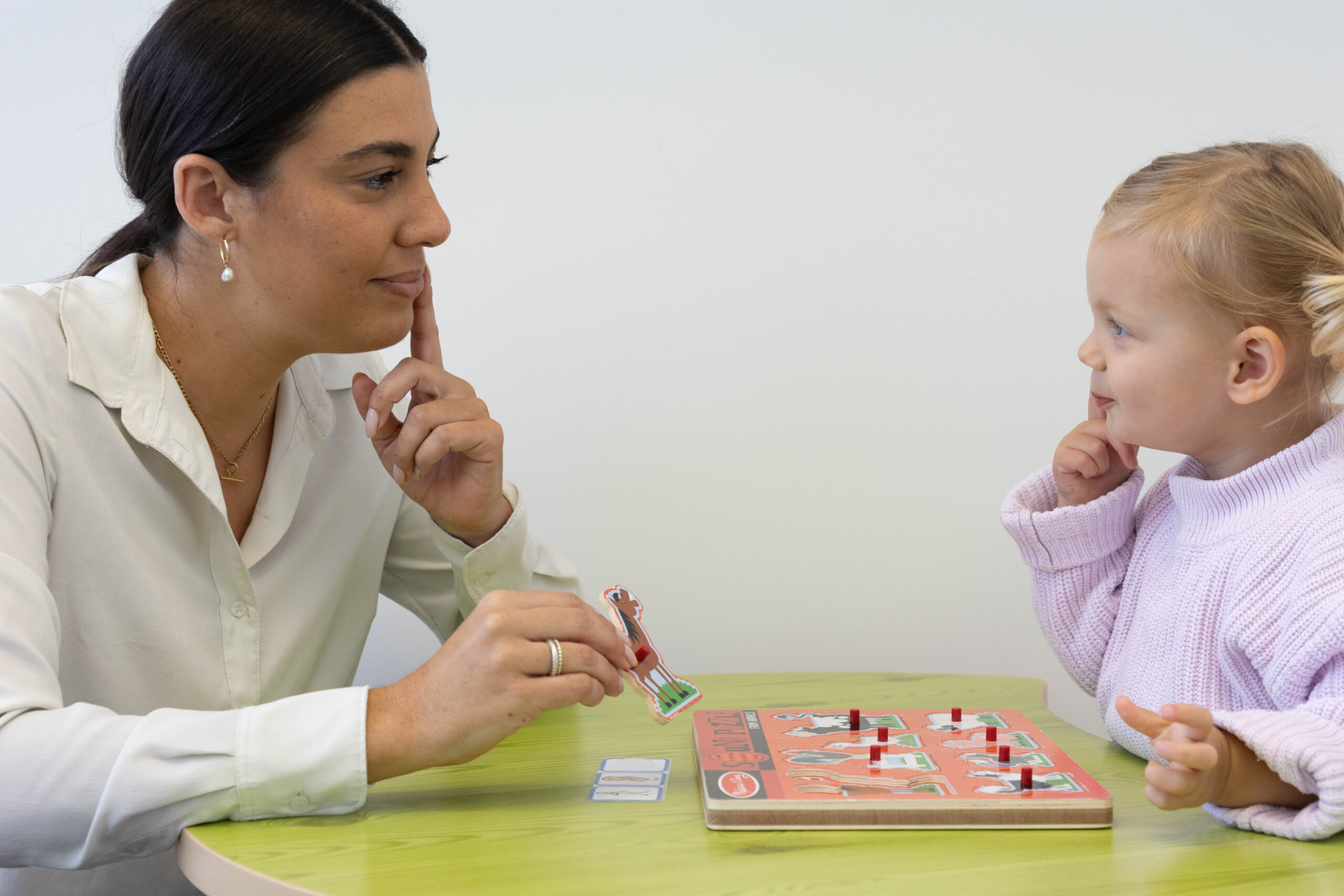Language is the cornerstone of human interaction, and for many children, developing effective communication skills can be challenging. Language processing difficulties can significantly impact a child’s ability to understand and use language, leading to difficulties in expressing themselves and interacting with others. This article explores the nuances of language processing, focusing on gestalt techniques, receptive language, and ways to enhance communication.
Understanding Language Processing

Language processing encompass a range of differences that affect a child’s ability to understand, interpret, and express language. These processes can impact various aspects of communication, making it difficult for children to engage in conversations, follow instructions, or express their thoughts clearly. For many children, these difficulties can stem from differences in the brain’s ability to process language.
One common example is Gestalt Language Processing, where children learn language in chunks or phrases instead of acquiring vocabulary word by word. This learning style often means that a child may repeat entire phrases they have heard to communicate something of similar function. These may appear out of context, but are meaningful to the child’s communication system . For example, a child might repeat a line from a favourite show when trying to express a feeling, rather than forming an original sentence. This can create challenges in interactions, as their communication may not always align with the immediate context and is harder to understand.
Understanding the nuances of language processing difficulties is crucial for parents, educators, and therapists. These difference is not one-size-fits-all; children may exhibit a range of symptoms. Some may have difficulty with understanding spoken language, which can lead to frustrations when they struggle to follow instructions or engage in discussions. Others might find it challenging to form sentences, affecting their ability to share ideas or emotions. This variance can sometimes make it hard for caregivers and professionals to identify the root cause of a child’s communication challenges.
The earlier these differences are recognised and addressed, the better the outcomes tend to be. Research shows that early intervention can lead to significant improvements in language skills, which is why it’s essential for caregivers to be observant and proactive. Engaging in activities that foster language development—like reading, playing interactive games, and encouraging storytelling—can create a richer linguistic environment for the child.
Recognising the unique ways in which a child processes language can help tailor interventions to meet their specific needs. For instance, children who exhibit Gestalt Language Processing may benefit from strategies that incorporate their existing language chunks, allowing them to gradually learn how to break down and reconstruct sentences for more effective communication. By providing context and meaningful opportunities for practice, therapists can help children move beyond scripts and towards flexible language use.
Understanding language processing differences, particularly Gestalt Language Processing, is the first step in supporting children who struggle with communication. By fostering an environment that encourages language exploration and providing appropriate interventions, caregivers can empower children to navigate their language difficulties and enhance their ability to connect with others.
The Role of Receptive Language Skills

Receptive language skills are fundamental to effective communication, encompassing a child’s ability to understand spoken language, follow instructions, and comprehend conversations. These skills serve as the bedrock upon which expressive language develops, meaning that children must first grasp the language before they can effectively communicate their own thoughts and ideas. For children with language processing difficulties, developing receptive language skills is particularly vital.
Children with receptive language difficulties may struggle to understand what is being said to them. This can lead to frustrations both for the child and their caregivers. For example, a child may not follow a simple command, such as “Please pick up the red block,” not because they are defiant but because they genuinely do not comprehend the request. This challenge can impact their ability to participate in everyday activities, making it crucial for caregivers to recognise these.
Research has shown that enhancing communication outcomes is closely tied to improving receptive language skills. Techniques that focus on comprehension can lead to more effective communication overall. Engaging children in activities that foster these skills is essential. Simple, yet effective practices can make a world of difference. For instance, reading books aloud to children and discussing the story encourages them to listen actively and process information. This practice not only builds vocabulary but also helps them understand narrative structures and context clues, enhancing their overall comprehension.
Moreover, incorporating interactive games that require listening and responding can significantly boost a child’s receptive language abilities. Activities like Simon Says or follow-the-leader games encourage children to listen carefully and act on verbal instructions, reinforcing their understanding of language in a fun and engaging way. These playful interactions create a positive atmosphere where children feel motivated to participate and learn.
It’s also important to use clear, simple language when communicating with children who have receptive language difficulties. By breaking down complex ideas into manageable parts and using visualsor gestures, caregivers can provide additional support that facilitates understanding. Children often benefit from seeing the words they hear, whether through books, pictures, or written instructions.
As they develop stronger receptive language skills, children will find it easier to express themselves. This foundational work not only enhances their ability to follow directions but also supports their overall social interactions. Being able to understand and process what others say fosters meaningful relationships with peers and adults alike, empowering children to engage in conversations and express their needs more effectively.
Receptive language skills are a critical aspect of communication development. By actively working to enhance these skills through engaging activities and clear communication, caregivers can lay the groundwork for improved communication. This proactive approach not only supports children with language processing difficulties but also enriches their interactions with the world around them.
Integrating Gestalt Techniques in Therapy

Integrating gestalt techniques into therapy offers a powerful approach for supporting children with language processing differences . Gestalt Language Processing focuses on how children learn language as whole phrases or scripts rather than breaking down language into individual components. This method recognises that many children absorb language in chunks from their environment, such as from conversations or media, and may initially rely on these learned phrases to communicate. Understanding this natural learning style can facilitate significant progress in language development.
Therapists can implement gestalt-based interventions to help children build their language skills. One effective technique is modelling language in context. For instance, therapists can use everyday scenarios, such as mealtime or playtime, to demonstrate language use in meaningful ways. By providing examples of how to express needs, feelings, or thoughts in these contexts, children can learn to adapt their learned phrases to fit new situations. This approach allows them to see language as a flexible tool for communication rather than a set of rules to follow.
Another vital aspect of receptive language techniques involves using visual supports. Visuals can help children connect spoken language with its meaning, making it easier for them to understand and eventually produce language independently. For example, incorporating pictures or symbols alongside spoken instructions can enhance comprehension and retention. This dual-channel approach—where auditory and visual cues work together—provides children with a more holistic understanding of language.
Moreover, incorporating play-based activities is crucial in making learning engaging and enjoyable. Play is a natural context for children to explore language. Through imaginative play, children can experiment with language use in a safe environment, using their learned phrases while also trying out new combinations. For instance, during pretend play scenarios, children can imitate social communication, allowing them to practise in a fun and less pressured way. This technique not only reinforces language skills but also builds confidence in their ability to communicate.
Therapists should also encourage parents and caregivers to use gestalt techniques at home. By reinforcing the strategies learned in therapy sessions, families can create a consistent language-learning environment. Encouraging caregivers to narrate daily activities using descriptive phrases can expose children to rich language experiences. For example, while cooking together, a parent might describe the actions and ingredients involved, using phrases like “We’re stirring the pot” or “Let’s chop the carrots.” This ongoing exposure helps children internalise language patterns and eventually form their sentences based on their understanding.
Language processing differences present unique challenges for children and their families. By understanding Gestalt Language Processing, recognising the importance of receptive language skills, and integrating effective therapeutic techniques, we can create a supportive environment for children to thrive. As parents, educators, and therapists work together, they can enhance verbal communication skills and empower children to navigate their language processing challenges successfully.
For further reading on these topics, consider exploring the peer-reviewed articles linked throughout this article. Each offers valuable insights into supporting children with language processing disorders and the strategies that can make a difference in their communication journeys.


